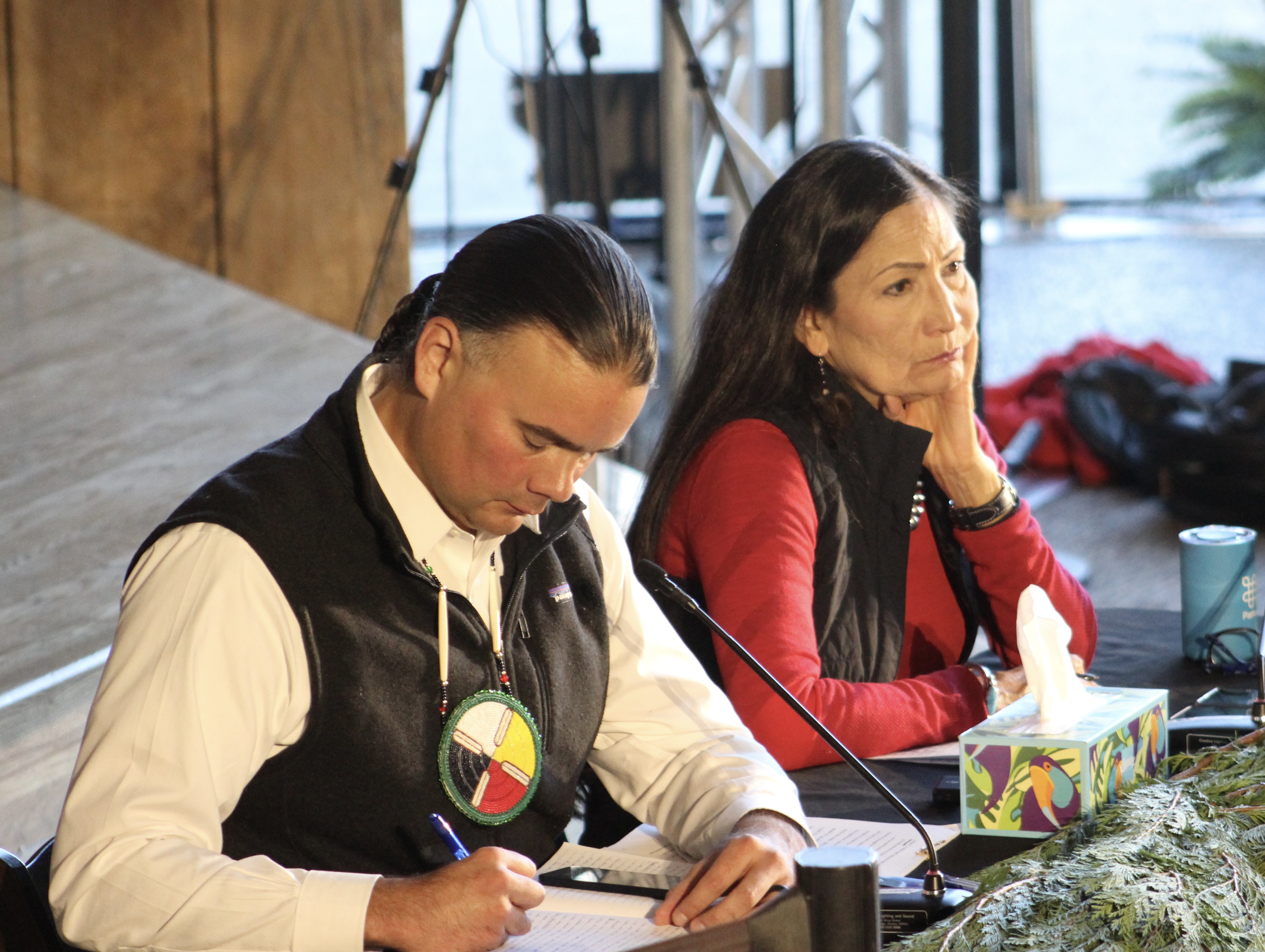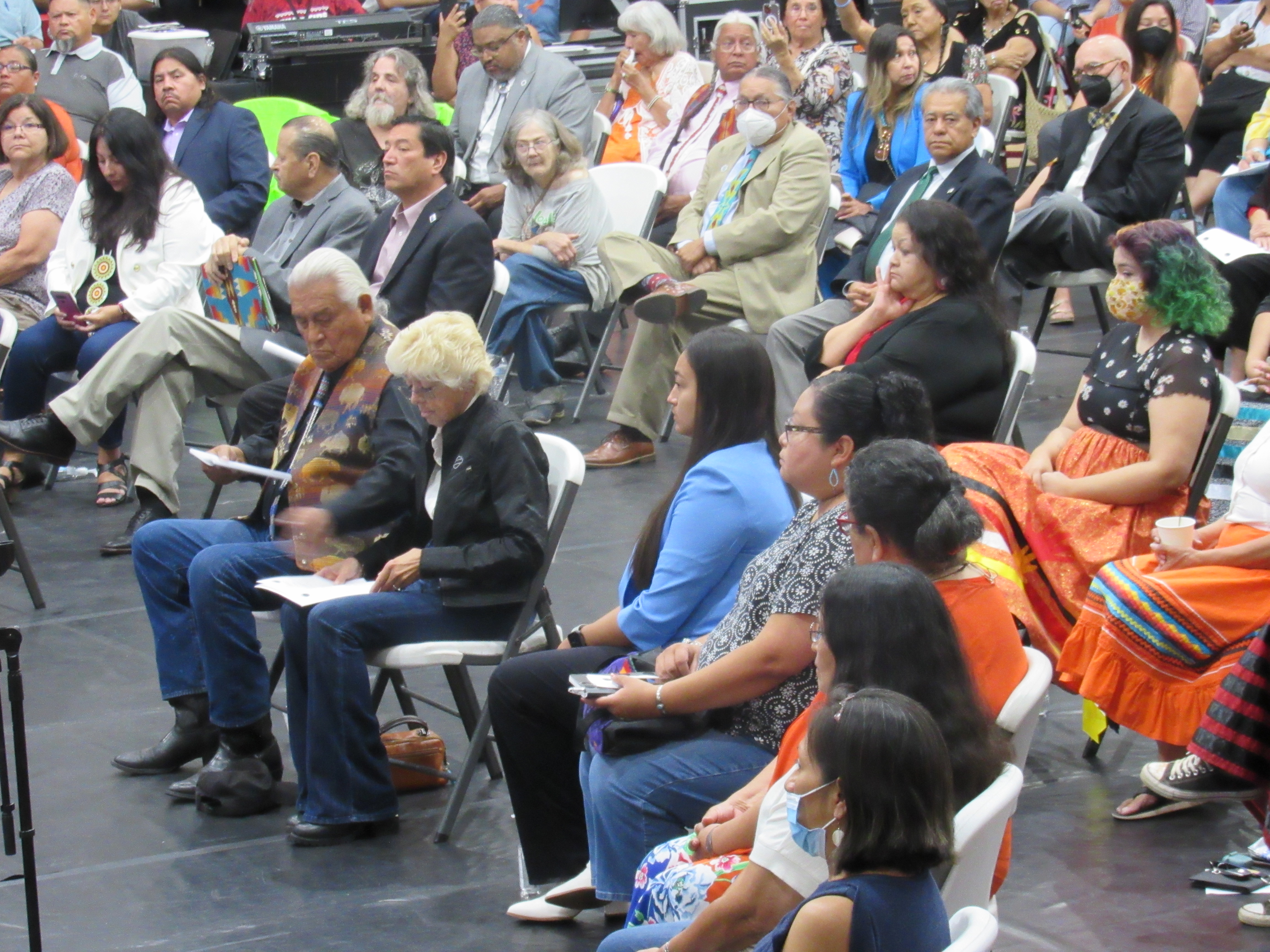
- Details
- By Jenna Kunze
The U.S. Department of the Interior (DOI) today released its second — and final — report following a three-year investigation into the “traumatic and violent” legacy of Indian Boarding Schools that the U.S. government operated for a century and a half.
The 105-page report, penned by Assistant Secretary of Indian Affairs Bryan Newland (Bay Mills Indian Community), builds on the first volume of the Interior’s Federal Indian Boarding School Initiative Investigative Report, published May 11, 2022. The initial report detailed for the first time an official list of Federal Indian boarding schools across to the United States, explained the policy justification the government used to establish those institutions, and detailed institutional conditions and the intergenerational impacts schools had on Indigenous People.
Today’s second volume of the investigation adds to previously-reported figures to paint an increasingly clearer picture of the Indian boarding school system: Between 1871 and 1969, the federal government paid more than $23.3 billion in inflation-adjusted dollars to fund the federal Indian boarding school system as well as other similar institutions. Of the 417 boarding schools across 37 states identified in the investigation, about half were run by a religious institution, and most “used the manual labor of American Indian, Alaska Native, and Native Hawaiian children to compensate for the poor conditions of school facilities and lack of financial support from the U.S. Government.”
At those schools, the investigation identified at least 18,624 students entered the system, and at least 973 students died while at school. The investigation also found that at least 74 school burial sites were associated with these institutions, though DOI expects that the number of students, student deaths, burial sites, and funds spent on the schools to be “far greater."
The DOI also identified more than 1,000 federal and non-federal institutions that didn’t fall under its definition of “federal Indian boarding school” but advanced the policy of assimilation. Those institutions — including Indian day schools, sanitariums, asylums, orphanages, and stand-alone dormitories — worked similarly to assimilate Native youth into white society.
“Make no mistake, this was a concerted attempt to eradicate 'the Indian problem,' — to either assimilate or destroy Native peoples altogether,” Interior Secretary Deb Haaland (Laguna Pueblo) said in a press briefing on Tuesday. “Thankfully, the federal government failed. It failed to annihilate our languages, our traditions, our life ways. It failed to destroy us, because we are still here."
During the press briefing, Haaland said she expects President Biden will read the investigative report, and believes that the Department of the Interior “will have conversations with the White House moving forward.”
The Federal Indian Boarding School Initiative was launched by Interior Secretary Deb Haaland (Laguna Pueblo) in June 2021, with the goals of identifying boarding school locations, burial sites, and the names and tribal affiliations of children interred at each location.
The same month, Haaland announced the Road to Healing tour, a yearlong commitment to travel across Indian Country to collect oral histories from boarding school survivors and their descendants—a task that concluded in November 2023, and took her and her staff to 12 communities. Much of that testimony was incorporated into Newland’s most recent report, where he drew themes from survivors’ testimonies, including the weaponization of food, the generational impacts across families, and the loss of language and culture leading to a spiritual wounding.
“One of the most prominent shared experiences of survivors across the country was the grief and trauma that resulted from Native languages loss from the Federal Indian boarding school system,” the report reads. “The punishments for speaking Native languages instead of English, even when children could not understand or speak English, commonly involved their mouths being washed with lye soap or varying types of corporal punishment that ranged in severity.”
According to the DOI, the federal Indian boarding school investigations “lay the groundwork for the continued work of the Interior Department to address the intergenerational trauma created by historical federal Indian boarding school policies.” To complete the full investigation, DOI staff and contractors reviewed approximately 103 million pages of U.S. Government records.
In his final report, Newland made eight recommendations for steps forward, including: for the U.S. government to formally apologize for the legacy of Indian boarding schools;
federal investment in the present-day harms caused by boarding schools; the erection of a national monument to commemorate boarding school survivors, and those who lost their lives; to identify and repatriate children who never came home from boarding school; and for the government to strengthen international relationships with nations who have similar histories with their Indigenous Peoples.
In his opening letter to Haaland, Newland acknowledges that Indian Country has seen a change in America’s understanding of Indian Boarding schools in the last three years.
“Survivors and leaders have begun efforts to explain the legacy and impacts of Indian boarding schools on local communities across Indian country,” he wrote. “Universities and other institutions have begun their own actions to redress for [sic] their role in the Federal Indian boarding school system. Popular books, television shows, and films have discussed these institutions, and humanized this history for wide audiences. Courts and members of Congress have engaged in a dialogue on the policies and laws advanced by this system.”

Newland wrote that he hopes the report does not mark the end of the U.S. Government’s work to acknowledge, understand, and heal from the impacts of these boarding schools.
“Instead, our shared work should mark the beginning of a long effort to heal our nation – after all, these schools were used to pursue a policy of forced assimilation over a century and a half,” he wrote. “Our work has occurred over just three years.”
More Stories Like This
Native News Weekly (August 25, 2024): D.C. BriefsUS Presidents in Their Own Words Concerning American Indians
Association on American Indian Affairs Opens Registration for 11th Annual Repatriation Conference
Operation Spirit Return Identifies Remains of Gila River, White Mountain Apache Man Missing Since 2020
Alaskan Native, Former Rep. Mary Peltola Enters US Senate Race
Help us defend tribal sovereignty.
At Native News Online, our mission is rooted in telling the stories that strengthen sovereignty and uplift Indigenous voices — not just at year’s end, but every single day.
Because of your generosity last year, we were able to keep our reporters on the ground in tribal communities, at national gatherings and in the halls of Congress — covering the issues that matter most to Indian Country: sovereignty, culture, education, health and economic opportunity.
That support sustained us through a tough year in 2025. Now, as we look to the year ahead, we need your help right now to ensure warrior journalism remains strong — reporting that defends tribal sovereignty, amplifies Native truth, and holds power accountable.
 The stakes couldn't be higher. Your support keeps Native voices heard, Native stories told and Native sovereignty defended.
The stakes couldn't be higher. Your support keeps Native voices heard, Native stories told and Native sovereignty defended.
Stand with Warrior Journalism today.
Levi Rickert (Potawatomi), Editor & Publisher


